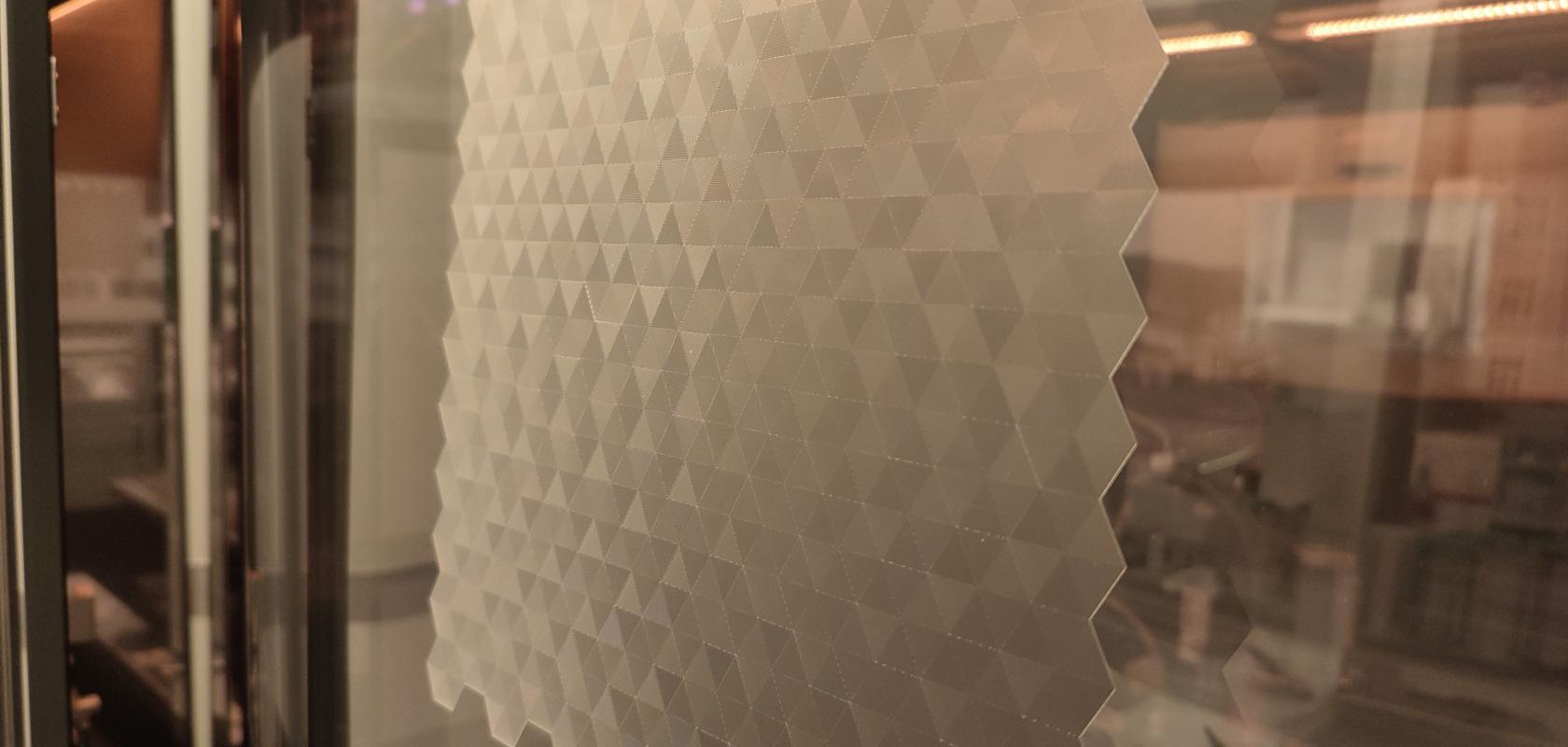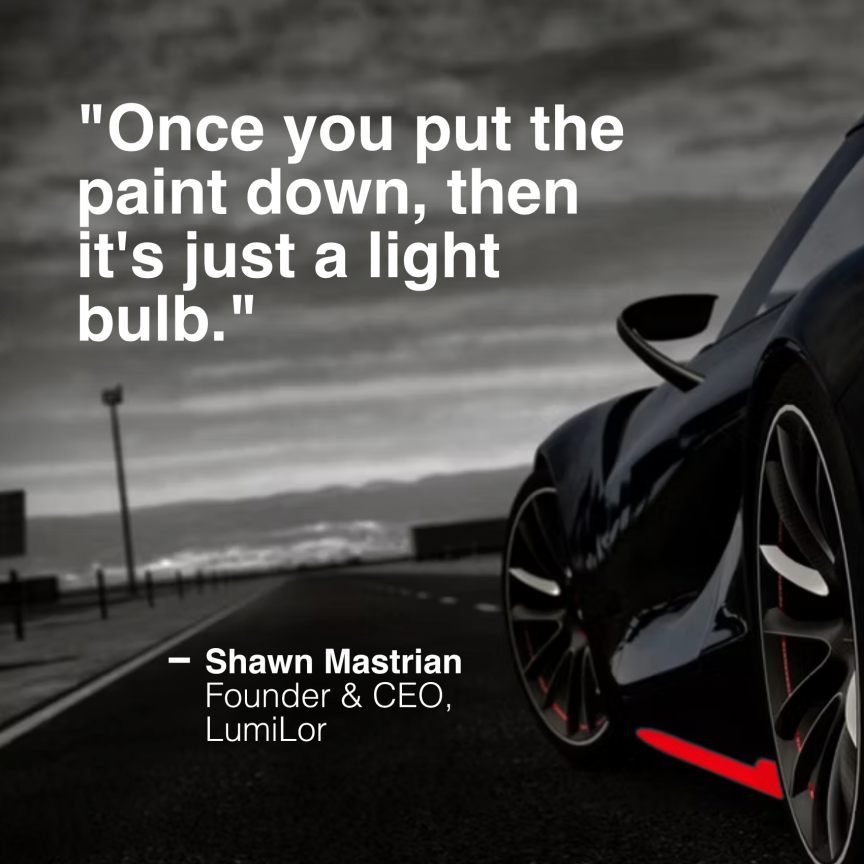The past few years have seen a dramatic increase in the use of Free Form Microlens Arrays (FMLAs) for lighting applications ranging from automotive functional lighting to microstructured luxury facades, writes Katharina Keller, Director of Optics at Zumtobel Lighting GmbH, who discusses the development of a special diffuser for PHABULOuS downlighting use case.
Although industrial demand for FMLAs is a current market reality, it seems the high access barriers to pre-commercial production capabilities in Europe prevent companies from commercially exploiting FMLA technology.
As a way for reducing these access barriers, the EU-funded PHABULOuS project was set up in 2020 to create a European pilot line for accelerating the manufacture of free-form micro-optics from prototypes to piloting and large volume production.
"A key aim of the project was to implement six industrial use-cases that could demonstrate pilot manufacturing FMLAs in an operational environment, namely AR, lenses for VR/AR headsets, automotive functional lighting, transportation lighting, luxury facades and, for general illumination, a LED downlight," said Katharina.
LED downlight use case
Downlights are used in areas such as lobbies and museums, but also in functional places such as offices and corridors. In this use case, the FMLA creates a special diffuser. With FMLAs, a great variety of intensity distributions can be realised as the elements are thin and light weighted. In this use case, the manufacturing of free-form micro-optical components by UV replication technologies (Roll-to-Plate R2P) was tested.
This was achieved through the coordinated efforts of five partners: Zumtobel Lighting (ZL; the task leader and a leading supplier of lighting solutions for professional indoor lighting applications); Power Photonic (PPH; a specialist in laser ablation processes); Morphotonics (MPH; a supplier of R2P nanoimprint equipment); Joanneum Research (JR; an Austrian research institute with expertise in nanoimprint lithography) and Centre Suisse d'Electronique at de Microtechnique (CSEM; a Swiss research centre that's active in the fields of precision manufacturing).
Objectives
The team’s objective was to address the issue of inhomogeneous luminance, which derives from a multi-colour light source. The problem is that, in order to change the spectral content of the illumination, light sources must be tuneable. However, to achieve tunability, white light sources usually consist of both cool white and warm white LEDs, and it’s this combination that creates the inhomogeneity.
As a solution, the team has developed a lighting unit containing a diffuser engineered from sheet-based products, which is able to homogenise the light and thereby meets the requirements of lighting that humans find comfortable.
Design
The optical system was designed by Zumtobel and consists of a light source comprising cold white and warm white LEDs. The light passing through the diffuser is preformed by a lens and a simplified CAD model of the optical system is shown in Figure 1.
The diffuser has a continuous shape as a base and, in order to create a hexagonal shape, the design was split and rotated.
Diffuser fabrication
The work stream for the fabrication of the diffuser consisted of the following steps:
1. Origination: The master was manufactured by Power Photonic via a laser ablation process that involved two stages: a cut stage to generate the gross form of the optic, and a smooth stage to reflow the top material to create a smooth surface. The aim was to produce a concave-convex lens array with the axis of the lens array rotated in 6 segments as shown in Figure 2.
Figure 2: Quartz master fabricated by Power Photonic (image: JR)
Upscaling
Upscaling of the hexagonal pattern was performed by Joanneum Research via Step & Repeat (S+R) UV imprint lithography using Power Photonic’s quartz master directly as the stamp. The aim was to achieve a seamless multiple replication of the single master field on a flexible PET sheet sized 700x380 mm².
This S+R imprinting successfully delivered a fully patterned 200x200 mm² area without empty space or pattern-free lines between the imprints, as shown in Figure 3. After upscaling, the profiles showed a very conformal replication, with only low shrinkage in the range of 2-4 %, which is normally expected due to UV crosslinking.
Figure 3: Finalised polymer shim by JR (image: JR)
3. Roll-to-plate (R2P) replication: After CSEM had galvanised the polymer shim to receive a durable nickel (Ni) tool, imprints from this Ni shim were realised using R2P technology at Morphotonics. A transparent flexible stamp was made from the shim using Morphotonics’ in-house resin and, before imprinting, an in-house silane-based primer was used to ensure good adhesion of the imprint resin on the glass substrates.
The R2P replication process highlighted two issues. Firstly, due to the combination of the height of the texture and the resin used, a low pressure and a large gap (to reduce the pressure even more) were needed. But using those parameters led to layer thickness variations, which could create air pockets at the seams in a few places. Secondly, shrinkage was challenging as 5% of shrinkage was observed in the imprints in comparison to the nickel shim – an effect that could be improved by compensating the height in the original master and/or changing the imprint resin.
Conclusion
The collaboration for this use case delivered satisfying results. The S+R imprinting delivered a fully patterned 200x200 mm² area without empty space or pattern-free lines between the imprints, and after upscaling, the imprinted patterns showed a very conformal replication, with only low shrinkage in the range of 2-4%. The replicated diffuser produced a light distribution very close to our target distribution and fulfilled all requirements.
The project gave partners the opportunity to create a network where they could learn from each other, generate new ideas and explore new technologies outside conventional lighting.
The successful outcome was a diffuser for lighting applications in offices and public spaces such as museums. But this is just the beginning because the knowledge, experience and confidence we’ve gained from this project has opened the door for us to explore and create more novel designs and components for a range of future lighting applications.
To find out more about other use cases check the PHABULOuS website


